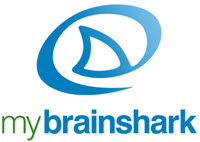 Student mental health is an issue that is close to my heart. Outside of my PhD research and work at CTE, I am the Co-Founder and Co-Director of Stand Up to Stigma, a student-led mental health initiative on campus partnered with Counselling Services and Health Services. Our goal is to start (and continue) a conversation about mental health at UW. Last term, I created a CTE workshop regarding how TAs and instructors can support student mental health – this blog post provides some of the resources available to help students in distress and promote mental well-being in the classroom.
Student mental health is an issue that is close to my heart. Outside of my PhD research and work at CTE, I am the Co-Founder and Co-Director of Stand Up to Stigma, a student-led mental health initiative on campus partnered with Counselling Services and Health Services. Our goal is to start (and continue) a conversation about mental health at UW. Last term, I created a CTE workshop regarding how TAs and instructors can support student mental health – this blog post provides some of the resources available to help students in distress and promote mental well-being in the classroom.
What’s the issue?
A recent survey conducted by the American College Health Association (2013) highlights the current issues Ontario post-secondary students are facing with respect to mental health. Within the past year:
- 59.2% of students had felt academics were traumatic or very difficult to handle;
- 57.9% had felt overwhelming anxiety;
- 40.1% had felt so depressed that it was difficult to function;
- 12.2% had been diagnosed or treated by a professional for anxiety;
- 10.0% had been diagnosed or treated by a professional for depression; and,
- 10.9% had seriously considered suicide.
The link between mental health and learning
Mental health problems are negatively associated with several learning outcomes, including lower GPAs and an increased chance of withdrawal from academic programs (Eisenberg et al., 2009; Hysenbegasi et al., 2005). Several sources have advocated for a campus-wide approach to mental health, which posits that all members of post-secondary institutions (e.g., administrators, faculty, and staff) should play a role in student mental health instead of counselling services only (Kitzrow, 2003).
What mental health support resources are available for UW students?
- Counselling Services: individual and group counselling, workshops (e.g., stress management, mindfulness, coping skills), emergency situations
- Health Services: medical doctors, psychiatric services, emergency situations
- Accessibility Services: academic accommodation for students
- Good2Talk (1-866-925-5454): free, confidential, and anonymous helpline for any post-secondary student in Ontario; available 24 hours a day, 7 days a week, 365 days a year
- Here 24/7 (1-844-437-3247): connection to addiction, mental health, and crisis services at 12 agencies in Waterloo, Wellington, and Dufferin counties
How can faculty/staff support student mental health?
- Queen’s University and Western University have excellent resources for staff and faculty that highlight common signs of distress, how to talk to a student in distress, and how to make referrals to support services.
- The Council of Ontario Universities has developed a series of videos that explain the issue of mental health in the post-secondary population, how to support students in distress, and the role of the university community in supporting student mental health.
How can I incorporate mental well-being into my classroom?
- Simon Fraser University: This evidence-based resource provides strategies and examples from Simon Fraser University faculty for how you can build well-being into your class.
- The Council of Ontario Universities has developed a resource describing strategies for teaching students with mental health disabilities.
References
Eisenberg, D., Golberstein, E., & Hunt, J. B. (2009). Mental health and academic success in college. The BE Journal of Economic Analysis & Policy, 9(1)
Hysenbegasi, A., Hass, S. L., & Rowland, C. R. (2005). The impact of depression on the academic productivity of university students. Journal of Mental Health Policy and Economics, 8(3), 145.
Kitzrow, M. A. (2003). The Mental Health Needs of Today’s College Students: Challenges and Recommendations. Journal of Student Affairs Research and Practice: 41(1): 167-181. doi: 10.2202/1949-6605.1310





